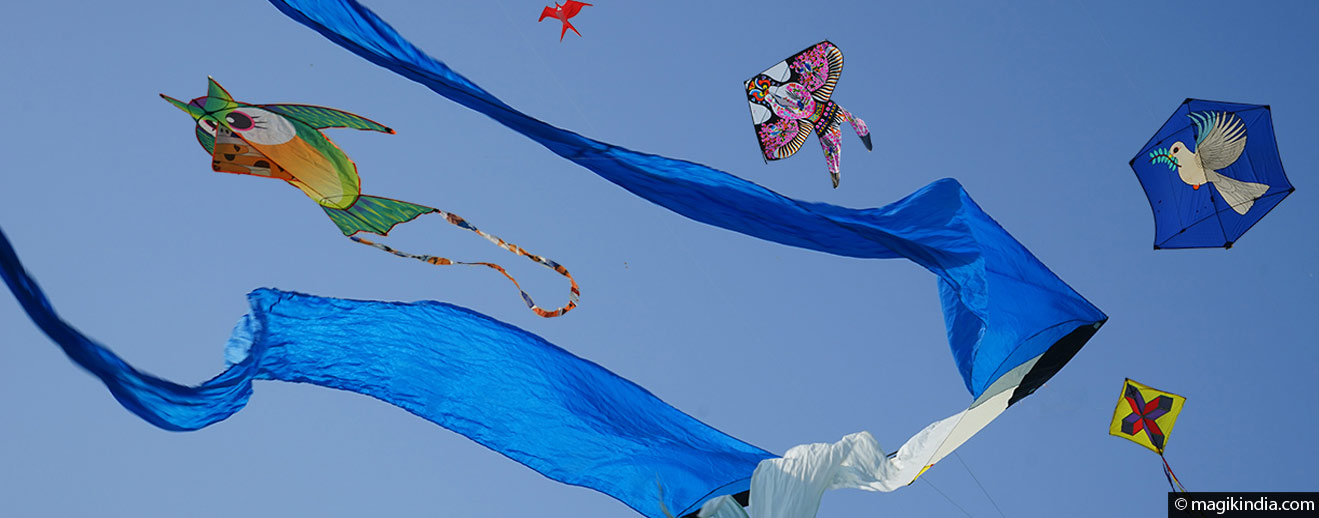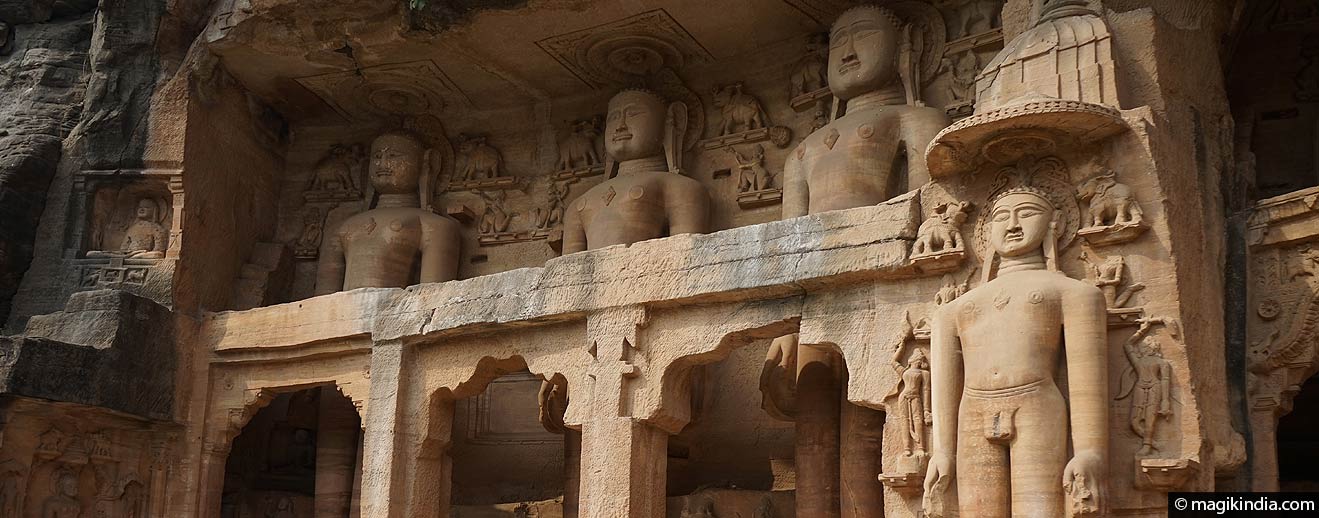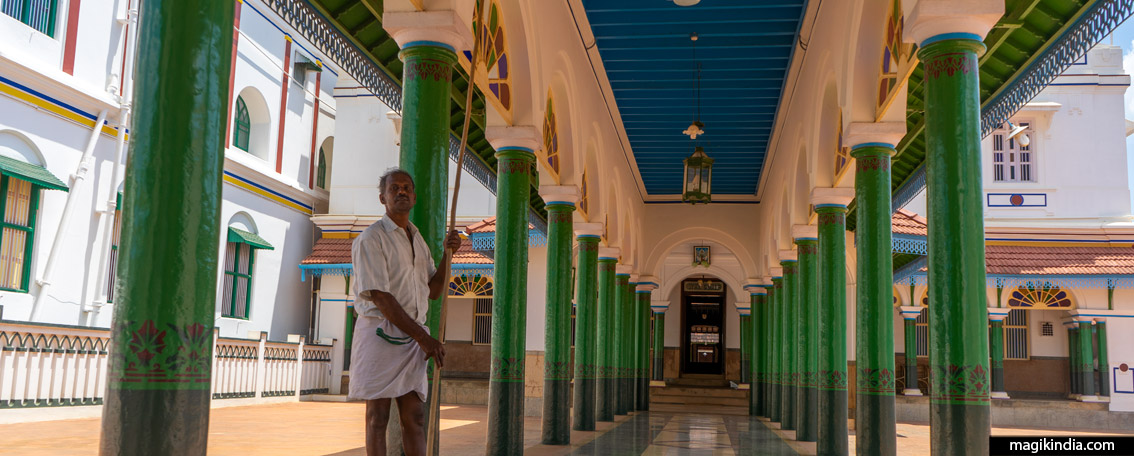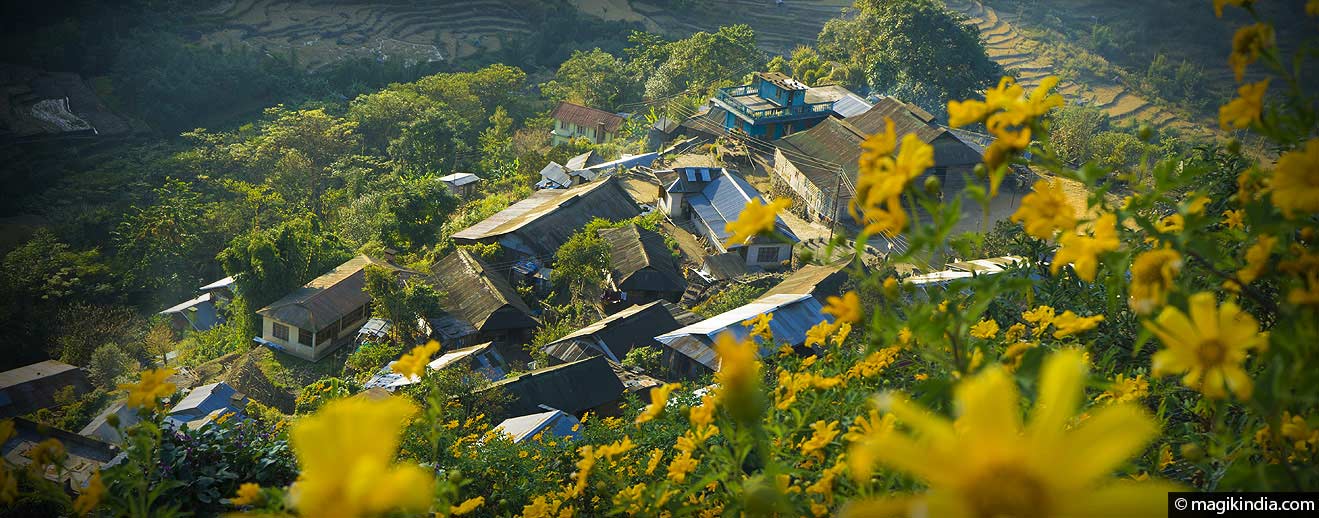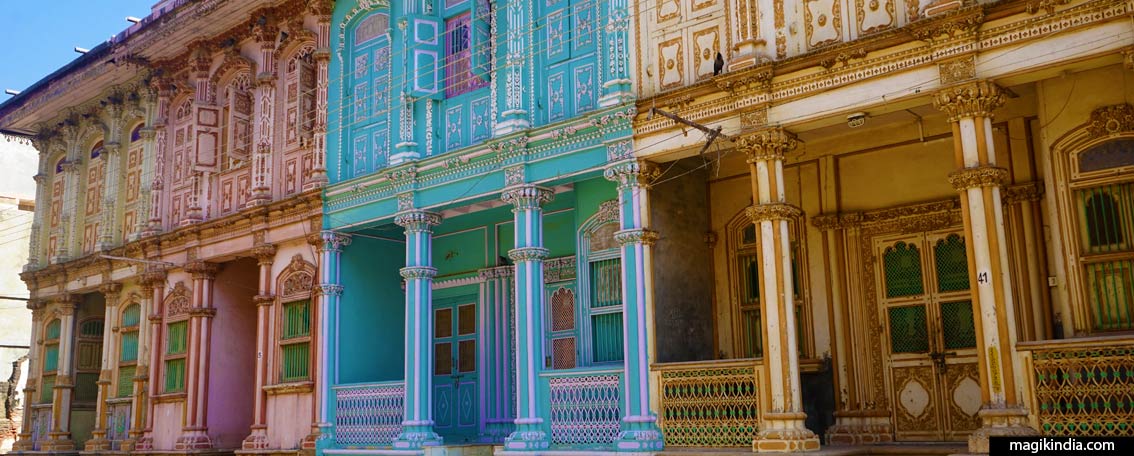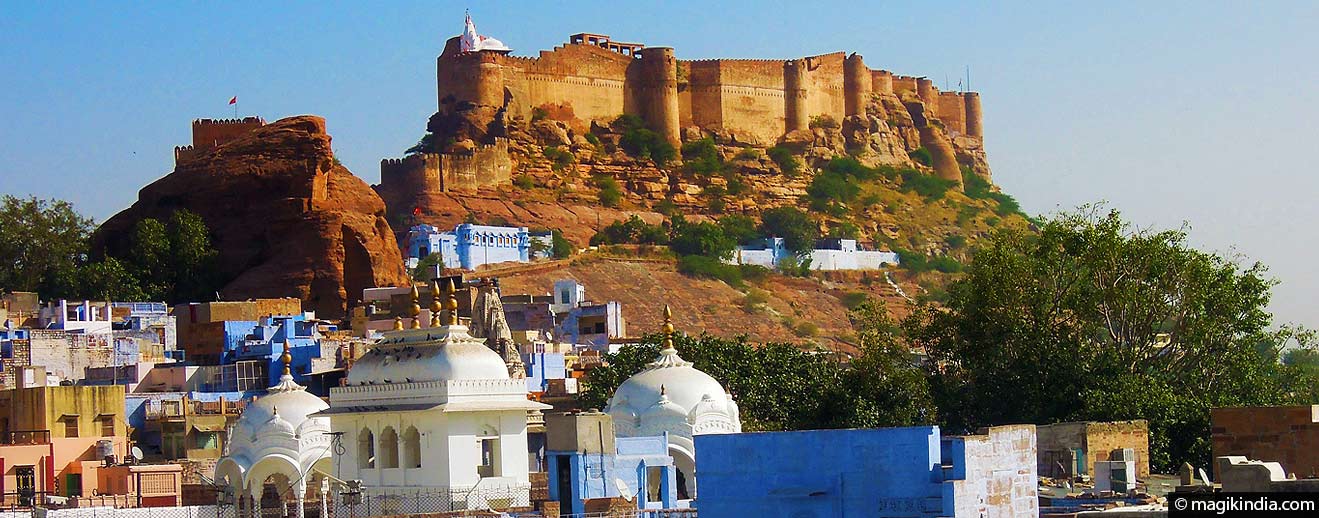
Holi, Festival of Colours of India
Holi is one of India’s best-known festivals, providing great material for photographers from all over the world. Its marks the beginning of spring and takes place at full moon in the lunar month of Phalgun (February-March). It is known as the festival of colours and also the festival of love, commemorating the divine love of Krishna and Radha.
Holi is also day for breaking down barriers, releasing tensions and ending conflicts – a day of forgiving and forgetting. It is also a festival of unity and brother-/sisterhood. It brings together all social classes, all castes, men and women; everyone looks the same when drenched in coloured powder!
Holika, start of Holi
The celebrations start with a Holika bonfire the night before Holi proper. Holi is named after Holika, the sister of the king and demon-deity Hiranyakashipu.
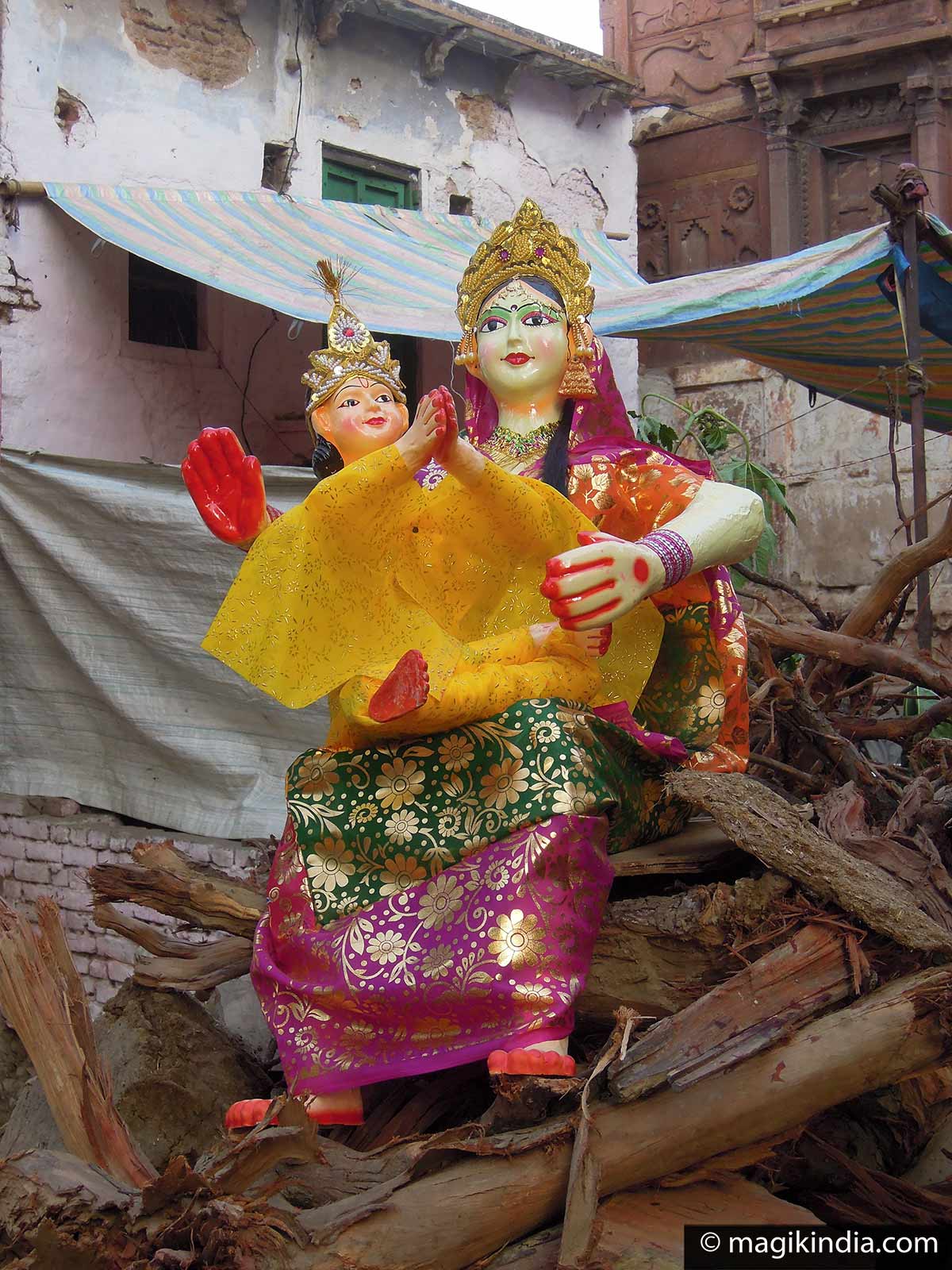
According to legend, Hiranyakashipu had obtained powers that made him indestructible. As a result he became arrogant, considered himself a fully-fledged god, and demanded that everyone worship him.
But his son Prahlada, a fervent devotee of Vishnu, would not bow down to his father.
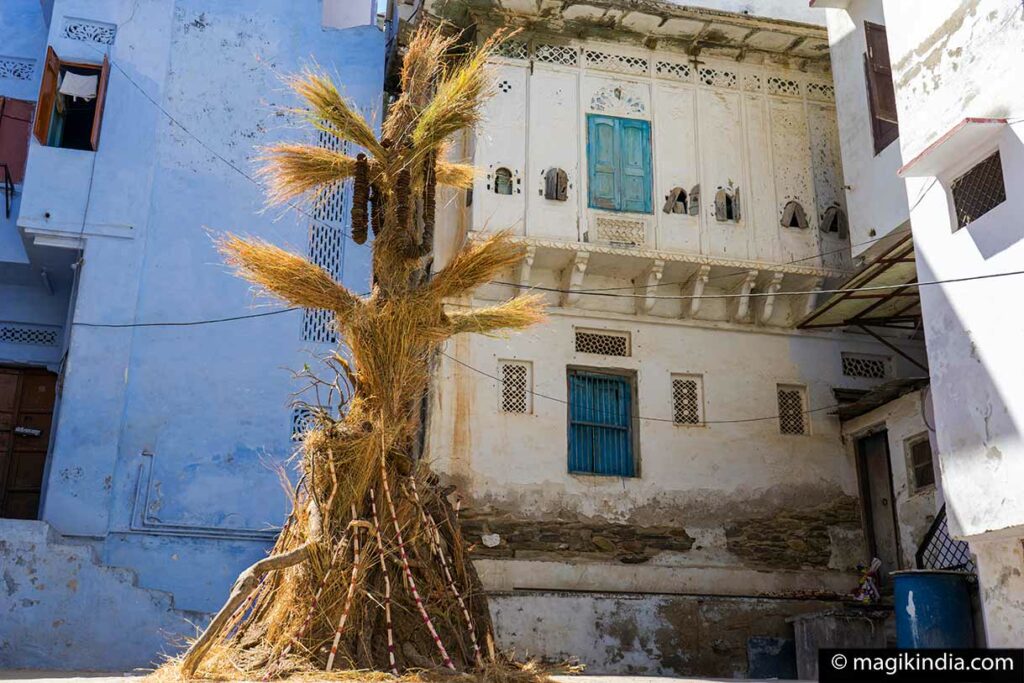
The furious king decided to kill his son, but his plan failed; Prahalad survived being thrown from a cliff, crushed by elephants, bitten by snakes and attacked by soldiers.
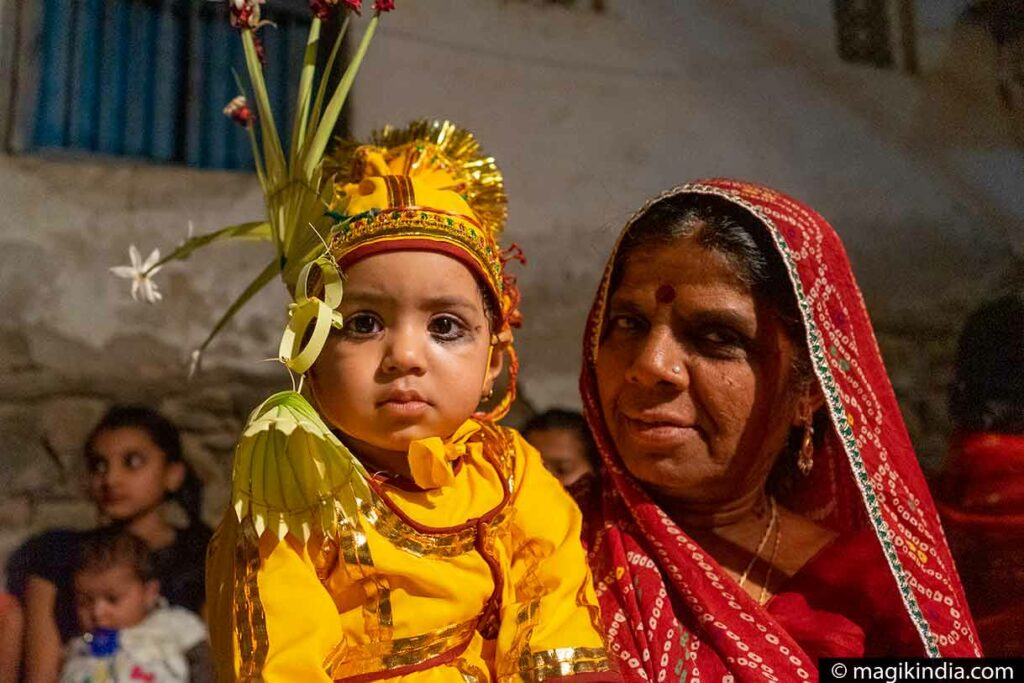
So Hiranyakashipu asked his sister Holika to kill Prahalad. Holika took Prahalad on her knees and sat atop a pyre. She had obtained a power from the gods that made her impervious to fire.
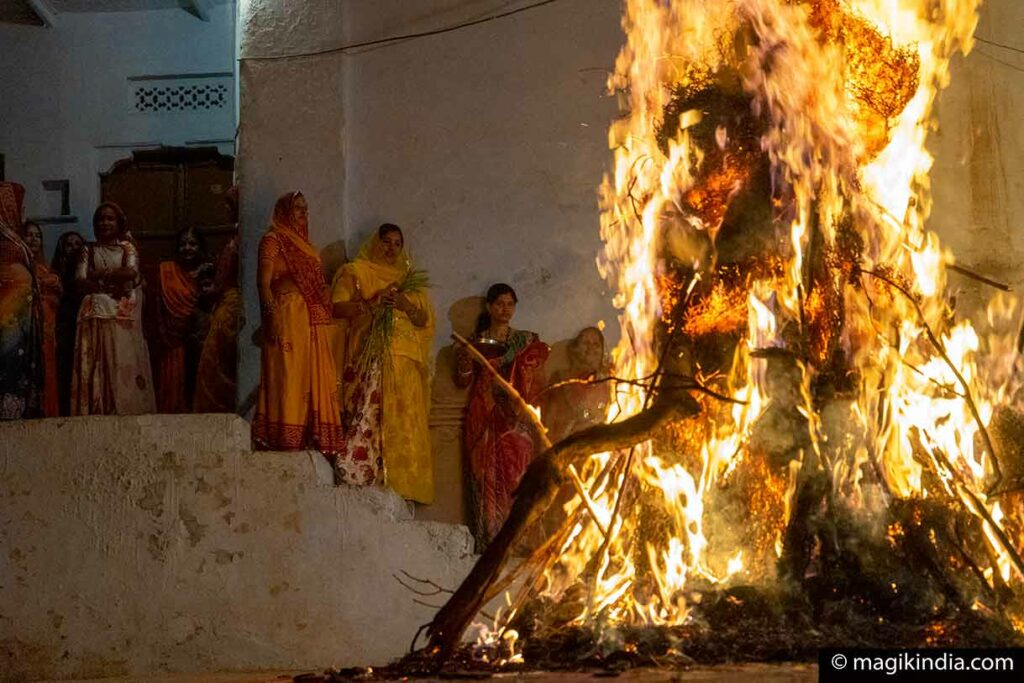
But the gods were displeased that she should use this power for evil purposes and immediately took it from her. She was burnt to ashes. Prahalad, who had remained faithful to his convictions, was protected by Vishnu and survived. Shortly afterwards, Vishnu killed Hiranyakashyap and Prahalad inherited the throne, reigning as a wise king.
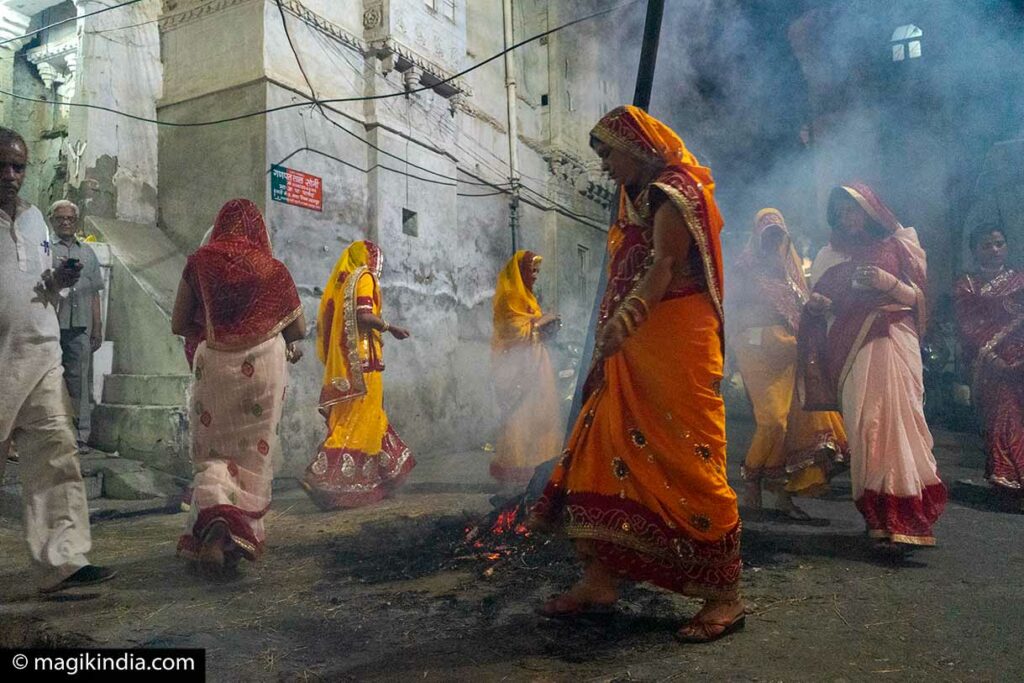
To celebrate this legend, great bonfires are built and an effigy representing Holika is placed on top. On the night before Holi the fires are lit and people sing and dance around them.
Some take embers home with them, for this fire is a reminder of the symbolic victory of good over evil.
Holi festivities
Holi proper starts the day after Holika. The streets explode with all the colours of the rainbow. People run playfully after each other and throw coloured water or powder at each other until everyone is covered in colour from head to foot.
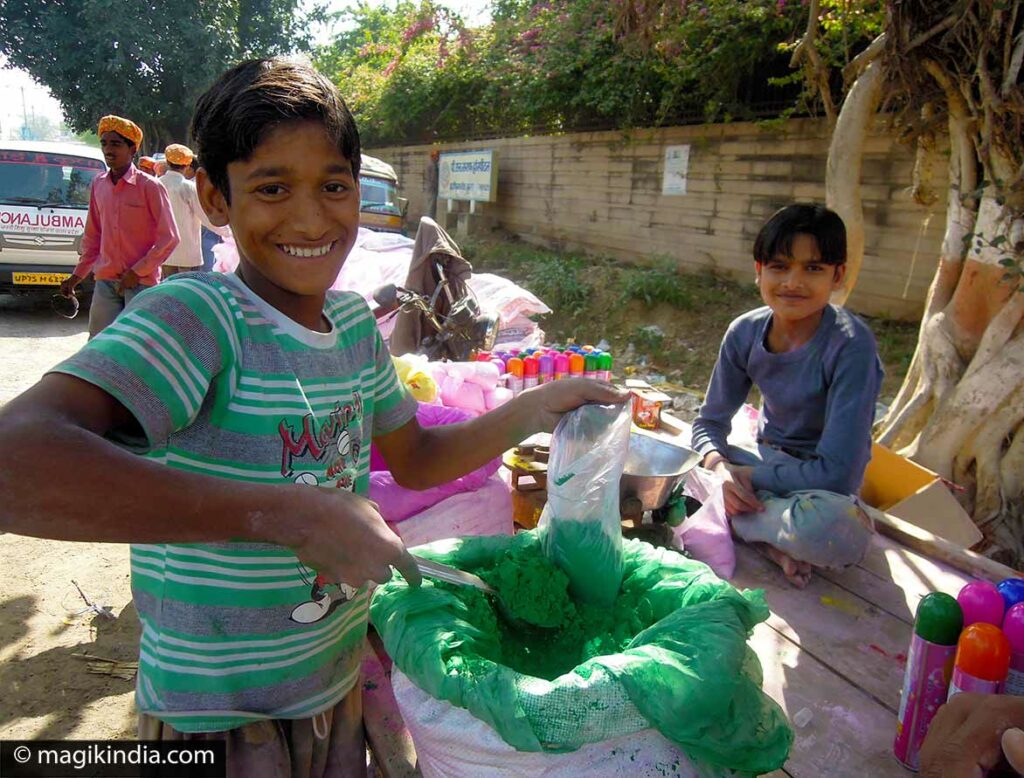
If you are out in the streets during Holi you will be assailed from all sides. There is no way to escape it and you cannot protest because that is the spirit of Holi – there are no limits. So be prepared! Don’t dress smart, protect your hair and skin, and wear glasses.
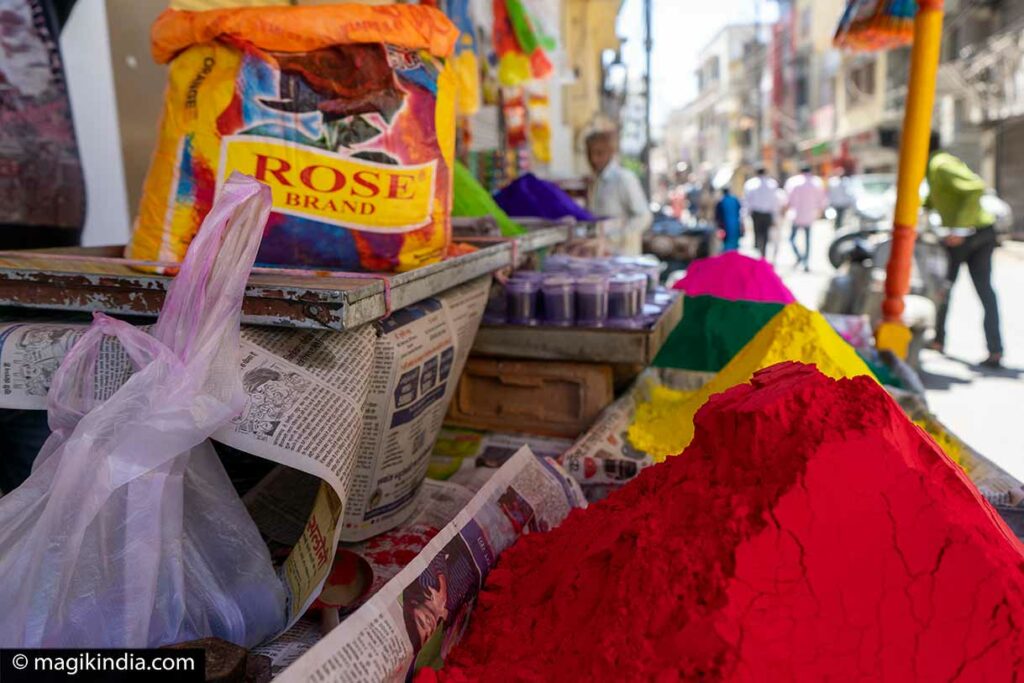
Originally, the coloured powders used for Holi were made from natural pigments: turmeric for ochre yellow, kumkum for carmine, blue hibiscus for indigo, etc. – plants that are used in the Ayurvedic pharmacopoeia. Because people can catch chills at this time of changing season, throwing the powders had a preventive or curative purpose.
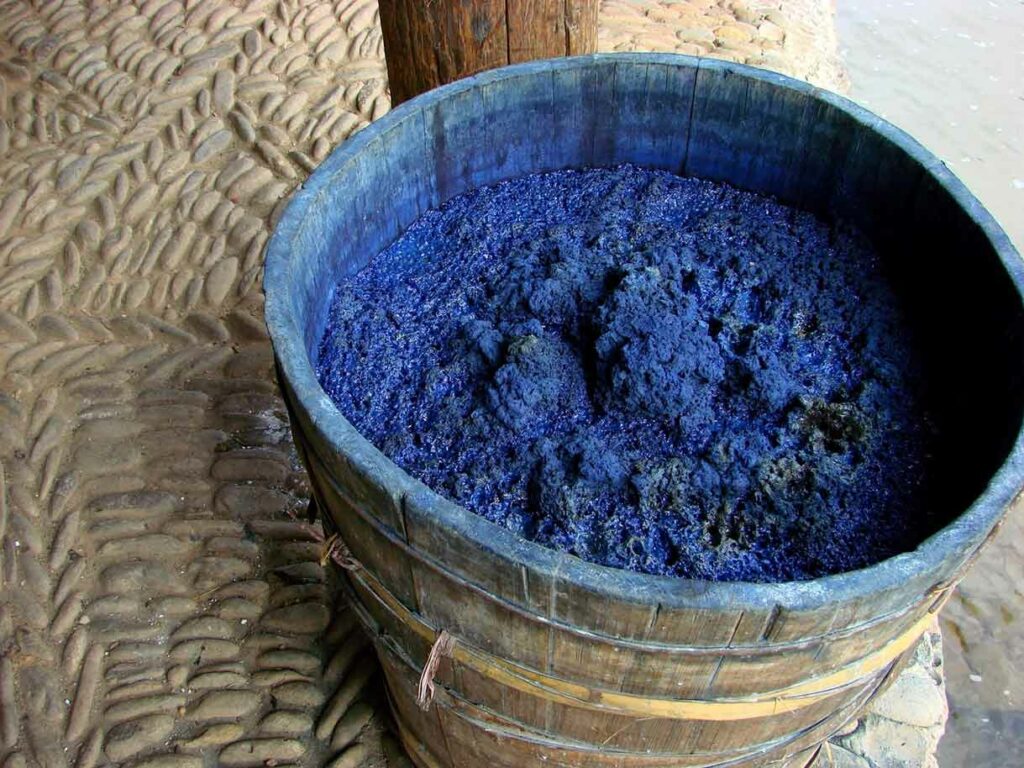
Unfortunately the powders used nowadays are made with chemicals and there is no control over their origin or properties. They can persist on the skin for several days and sometimes cause irritation.
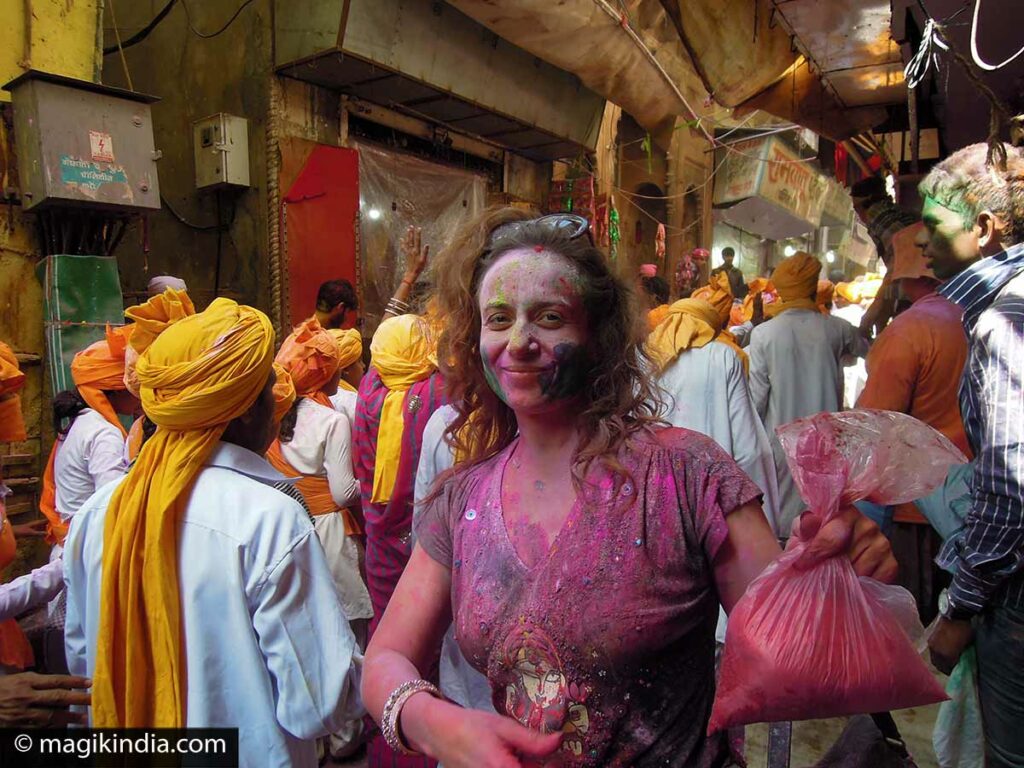
Holi is a general letting off of steam. Indeed this was one of its original purposes, allowing people to be momentarily free of all prohibitions.
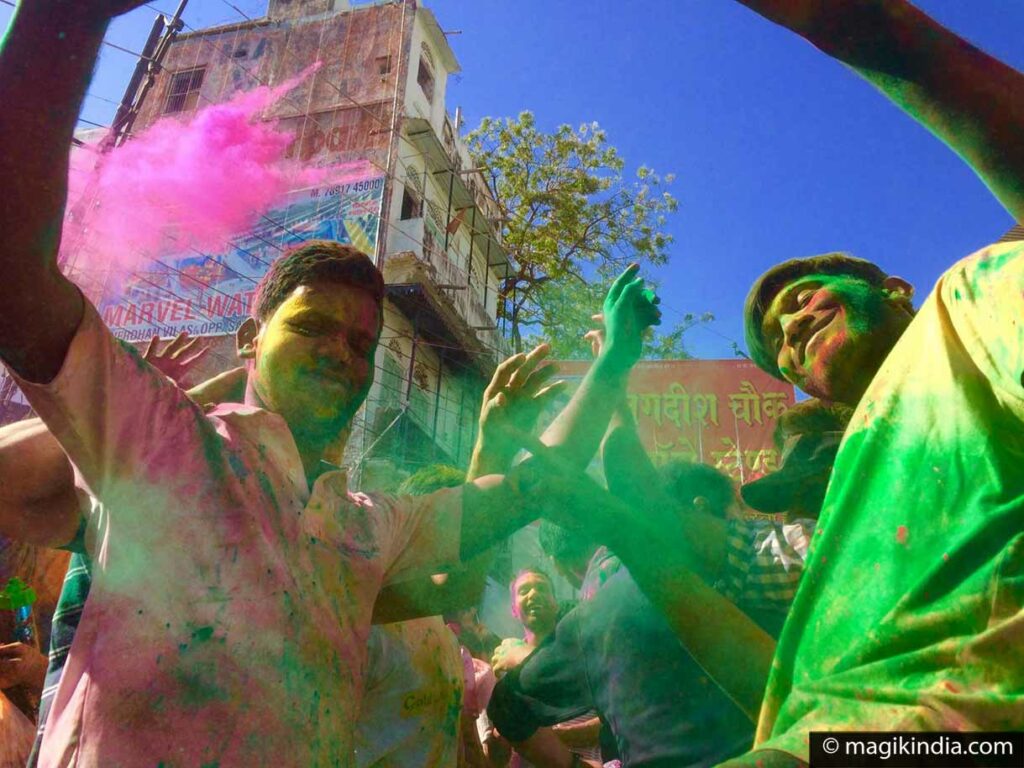
But the party can also degenerate with too much alcohol and drugs such as bhang, a drink made from cannabis. Men under the influence soon become uncontrollable. It is best to attend Holi in the morning, before the men have drunk too much or overindulged in drugs.
In fact many Indian families prefer to stay home and play Holi amongst themselves rather than get too close to the excesses going on in the street.
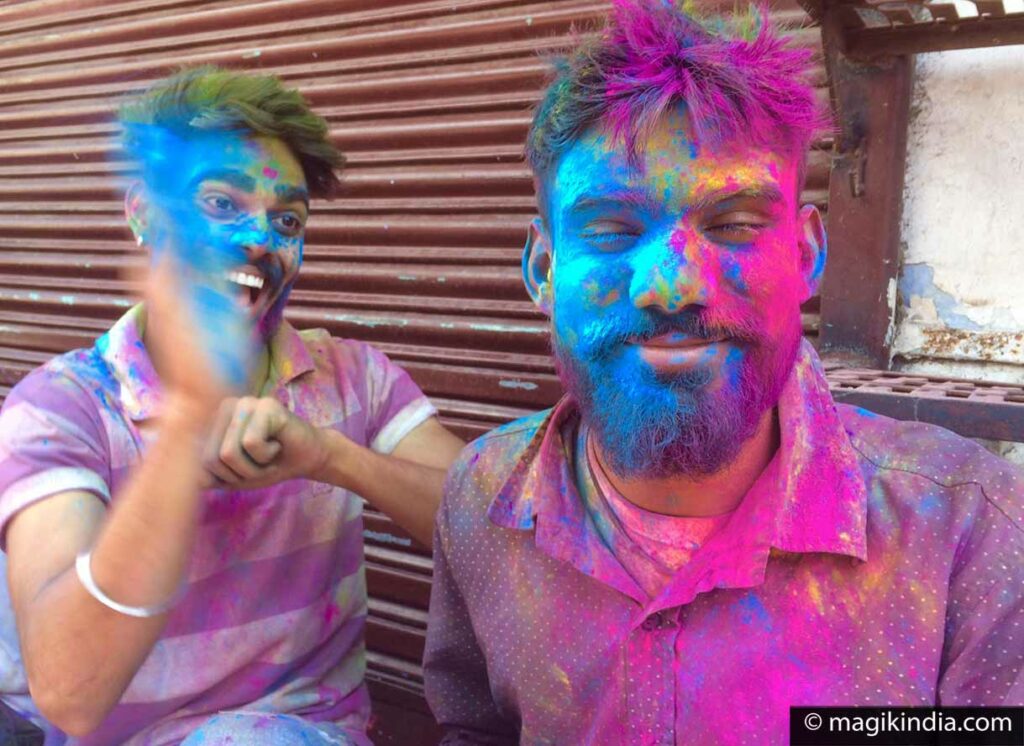
[ Holi in Mathura and Vrindavan ]
Holi and Krishna
Holi, festival of colours, is intimately linked to the Hindu god Krishna.
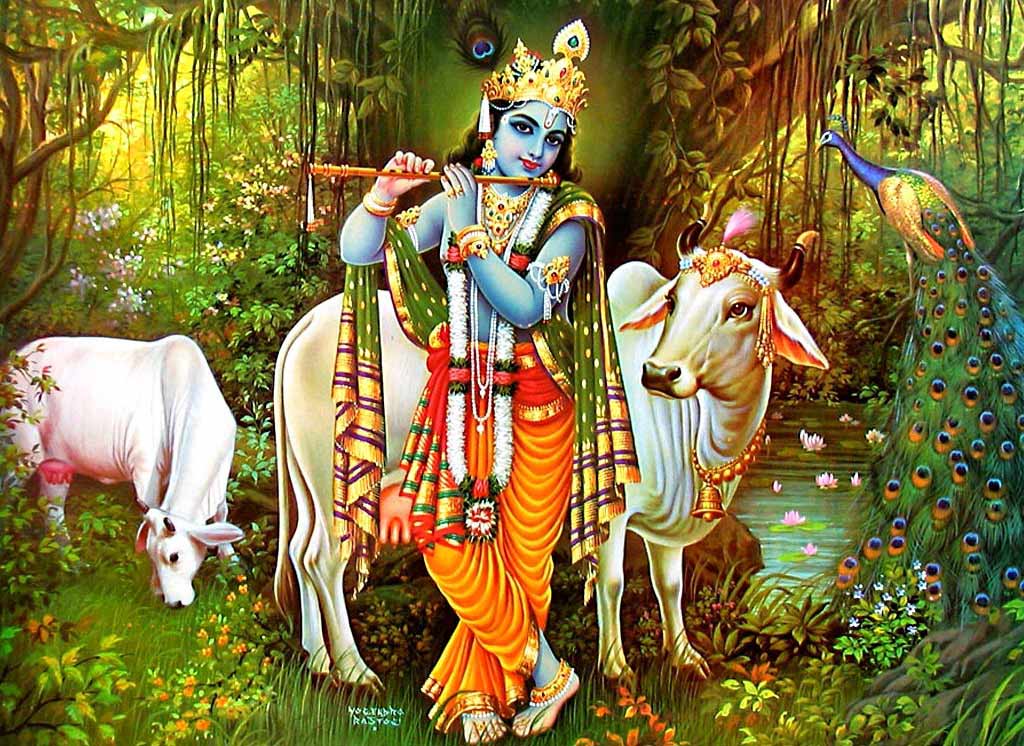
Krishna has blue skin because a demon-woman called Putana poisoned him with her breast milk when he was a baby. In his youth Krishna was desperate to know whether Radha and the other gopis (cowherd girls) would like him despite his blue skin. His mother, tired of seeing her son lament in this way, told him to approach Radha and colour her face with whatever colour he liked. He did, and Radha and Krishna became a couple. Ever since, the playful colouring of Radha’s face has been celebrated at Holi.
In the region of Braj, where Krishna grew up, the festival lasts 16 days in commemoration of Radha’s divine love for Krishna (see below)
Another story tells that Krishna liked to play jokes on the girls of his village by throwing coloured water at them.

Barsana – Laddoo and Lathmaar Holi
Mathura in Uttar Pradesh and towns around it are associated with the Lord Krishna story and are famous for their Holi celebrations. Barsana, an hour’s drive from Mathura, has a unique version of Holi called Laddoo and Lathmaar Holi.
Laddoo Holi celebrates Krishna’s visit to Barsana during Holi. It takes place on the day before Lathmaar Holi.
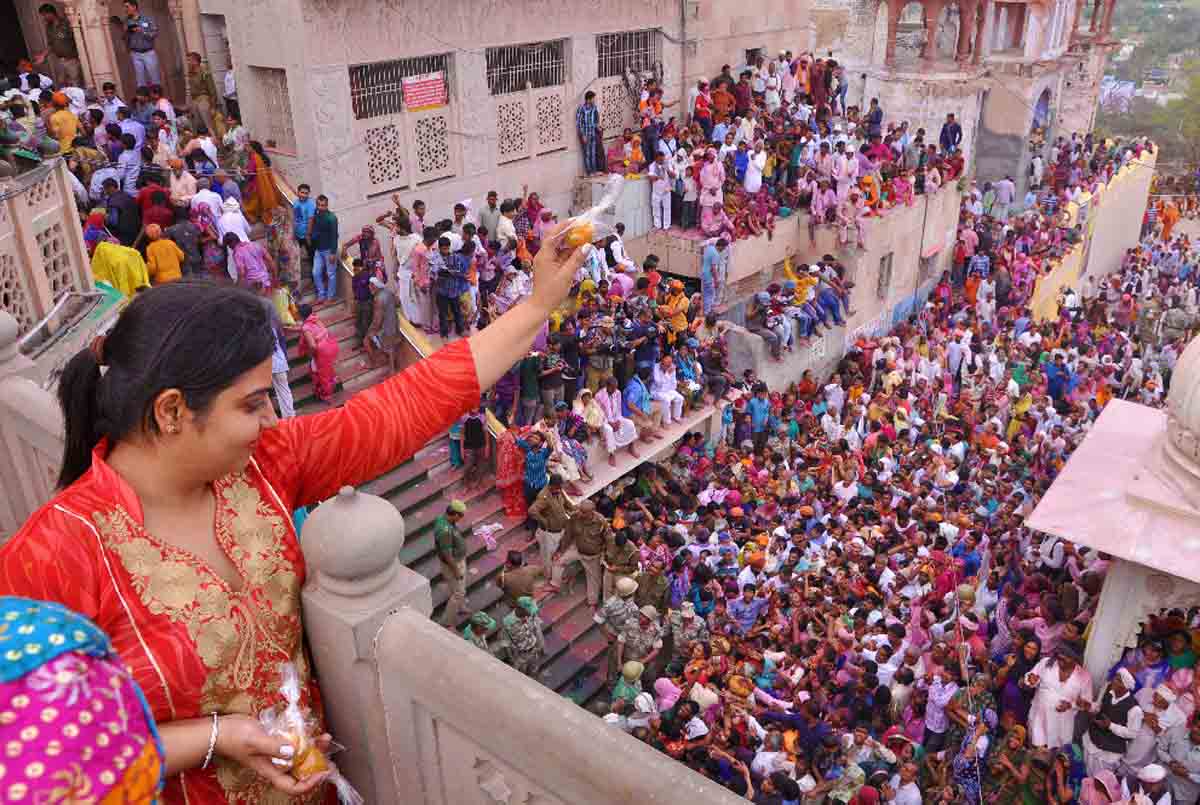
Laddoos are ball-shaped sweets that are very popular in India. At this festival they are thrown from the top of the Radha temple onto the crowd below, who try to catch them. They are regarded as prasad – holy food – and are treated with great respect.
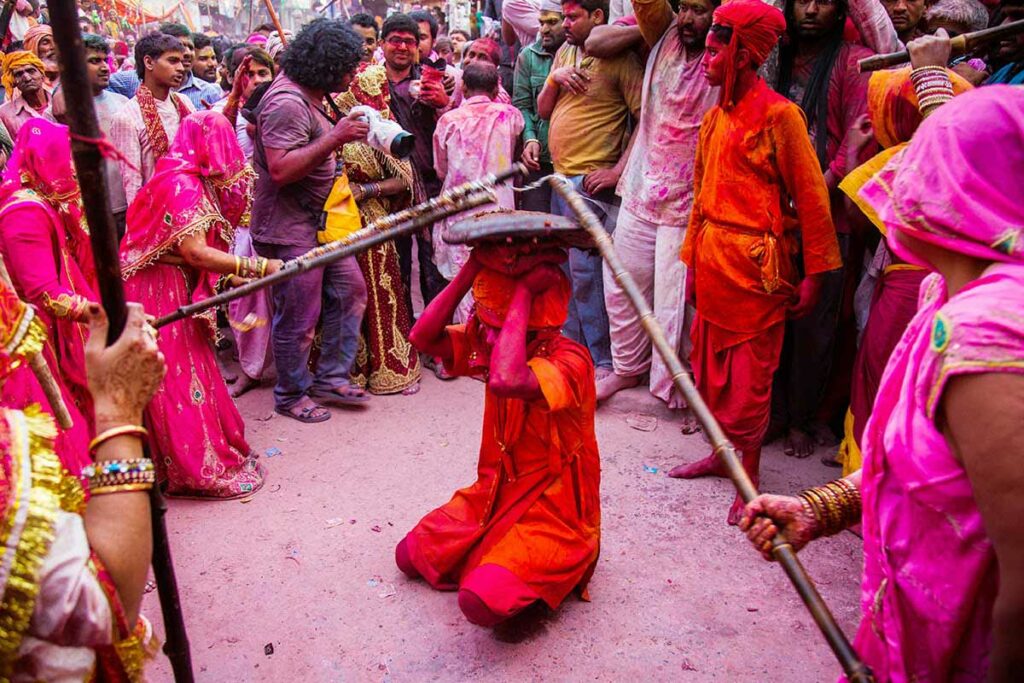
The literal meaning of Lathmaar Holi is “Holi with stick-beating”. Legend has it that when Lord Krishna was living in the neighbouring village of Nandgaon, he used to visit Barsana where his beloved Radha was born. The dark-faced god enjoyed teasing Radha and her gopi friends (gopis are cowherd girls). The girls took offense and chased him out of town.
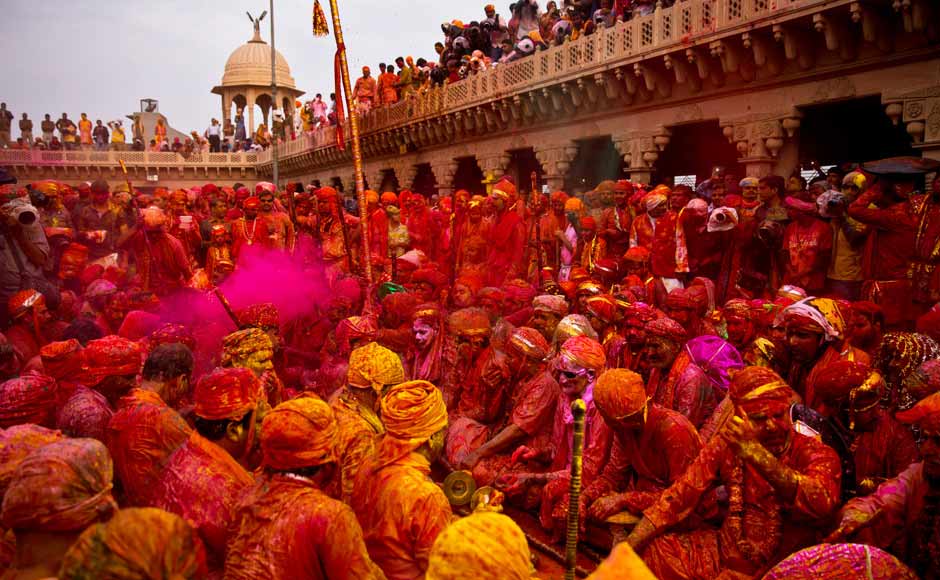
To relive the legend, the men of Nandgaon come to Barsana during Holi and are greeted by the women of the village armed with long sticks called lathi. The Nandgaon men chant verses to provoke the women, who set about them with their sticks. The men use shields to protect themselves. The next day the women of Barsana go to Nandgaon and are drenched with coloured water by the men there.

